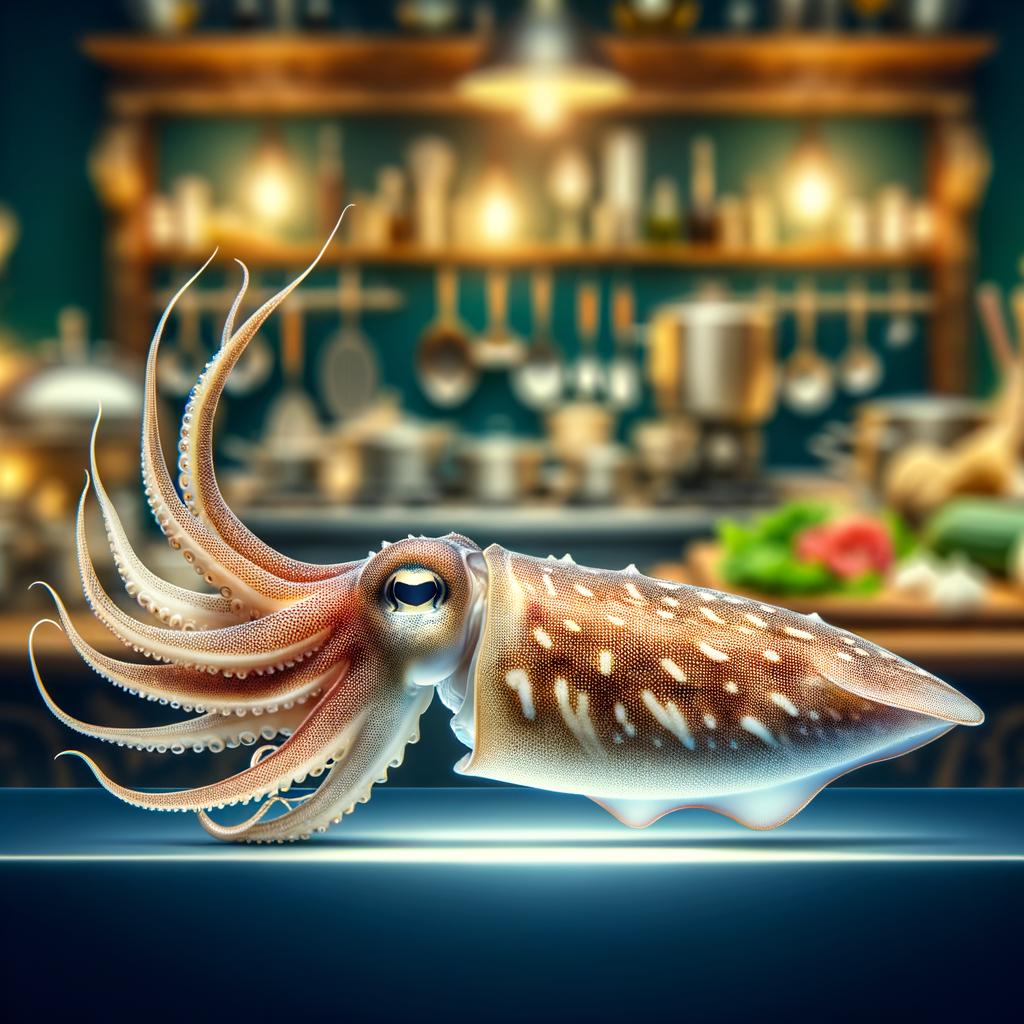Cuttlefish or Squid

Description
Cuttlefish, often mistaken for its close relative the squid, is a marine creature that belongs to the same family as octopus and nautilus. It is known for its unique, oblong shape and its ability to change color to camouflage itself from predators. The flesh of cuttlefish is firm yet tender, offering a slightly sweet, almost nutty flavor that is more delicate than that of squid. Its unique characteristic lies in its ink, a dark, flavorful substance that has been used as a dye and a unique flavoring in various cuisines.
Primary Uses
Cuttlefish is a versatile ingredient that can be grilled, fried, stewed, or even served raw in certain dishes. It is a key component in many Mediterranean and Asian cuisines. In Italy, it's often used in pasta and risotto dishes, particularly in the Venetian classic, 'risotto al nero di seppia' where the cuttlefish ink lends the rice a dramatic black hue and a briny depth of flavor. In Japan, it's served as sashimi or sushi, while in Korea, it's often stir-fried in spicy sauces. Beyond its culinary uses, cuttlefish ink has been used in traditional medicine to treat ailments like melancholy and fever, and its hard internal shell, known as cuttlebone, is a popular calcium-rich supplement for pet birds.
History
The use of cuttlefish in cooking dates back to ancient times. Romans considered it a delicacy and often used its ink as a condiment. The popularity of cuttlefish spread across Europe during the Middle Ages, and it has remained a staple in Mediterranean cuisine ever since. In Asia, cuttlefish has been used in traditional cooking for centuries, often dried and ground into a powder for use in soups and stews. There are numerous folk tales and myths surrounding cuttlefish, including the belief in some cultures that its ink has magical properties.
Nutritional Information
Cuttlefish is a nutritious ingredient that is low in fat and high in protein. It's a good source of Vitamin B12, which supports nerve function, and selenium, which has antioxidant properties. Cuttlefish also contains a significant amount of zinc, which aids in immune function and wound healing. When compared to squid, cuttlefish has a slightly higher calorie count due to its denser flesh, but it also offers a richer concentration of vitamins and minerals. However, like other seafood, it should be consumed in moderation due to its cholesterol content. This culinary treasure from the sea is not just a treat for the palate, but also a nourishing ingredient that contributes to a balanced diet.

